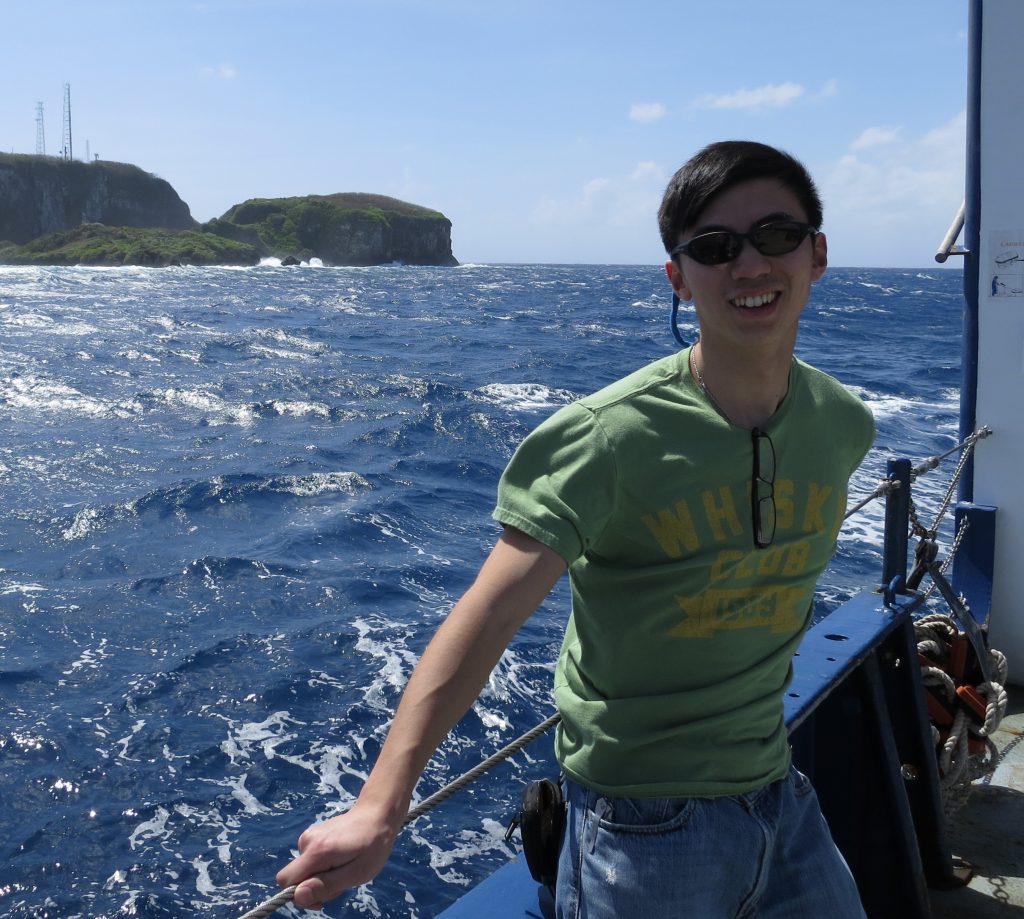20 September 2021–Growing up in the mountains in China, Songqiao “Shawn” Wei never saw the ocean until he was 23, flying over the Pacific from Beijing to San Francisco for an American Geophysical Union meeting. “But when I was a kid I liked the sea, from books and movies, and so I wanted to study something related to the ocean,” he recalls. “And there are amazing science questions at subduction zones.”
Wei, an assistant professor of geological sciences at Michigan State University, works on questions (deep) below the ocean now, involving the Earth’s mantle structures associated with subduction zones. For 11 years, he has been imaging the seismic structures of the Tonga Trench-Lau Basin subduction zone, a complicated tectonic region in the southwestern Pacific Ocean.
The area has a little bit of everything, Wei says, from crustal extension to collision to upwelling of a mantle plume. A subduction zone is “kind of like a conveyor belt in a factory, bringing rocks from the surface down into the deeper Earth,” he explains. “My research follows this belt from the [oceanic] trench to 50 kilometers deep where megathrust earthquakes occur, 100 to 200 kilometers deep to where intermediate-depth earthquakes happen, and then into the transition zone between the lower and upper mantle.”
The “belt” brings water into the mantle that can trigger melting, along with elements and minerals from the crust that are less common in the mantle. Seismic waves pass through these mineral and melted areas in different ways compared to the bulk mantle. Researchers like Wei analyze these wave data to develop a detailed picture of mantle structures. Among other applications, these findings offer observational building blocks for researchers who are modeling the evolution of the Earth’s plate tectonic system.
He uses a variety of techniques to analyze the seismic wave data, from earthquake relocation to seismic tomography to the use of SS precursors. SS precursors are specific waves from earthquakes at the Earth’s surface that are reflected by structures in the mantle and reach seismic stations at the surface before the earthquake’s main SS waves reach the station.
The signal from them is weak, but it allows researchers to explore the mantle in areas where there are sparse stations, such as the middle of an ocean. Recently, Wei and his colleagues used the technique to find the origins of the Hawaiian plume head that was created 100 million years ago and subducted into the Kamchatka Trench about 20 to 30 million years ago.

Most of Wei’s work involves analyzing data that has already been collected by other researchers, but he has helped recover ocean bottom seismometers near the Marianas Trench, and is hopeful that he and his colleagues can place an array of similar seismometers in the Tonga-Samoa region soon. A plan to deploy them last year was delayed by COVID-19 and equipment shortages.
While he is excited for the new array to be in place to capture tectonic interactions in this critical region where the down-going Tonga slab meets the upwelling Samoan mantle plume, “I know that we won’t be able to see the whole picture there because the array is too small.” A dream experiment would be to have an array ten times as large, he says, “to see the whole system down to the core-mantle boundary. That would be fantastic.”
A career in seismology was a “good accident” for Wei, he says. As a kid, he wanted to be an astronomer, and then a theoretical physicist like Albert Einstein or Stephen Hawking. He was admitted as a geology major to Peking University, thinking he might change his major to physics after one year, but that year of classes changed his mind.
The introduction to physics was not as exciting as he had hoped, he admits. “I got into physics because of Einstein, because of Stephen Hawking, because of black hole theory, but that is not something you learn in the first year of physics.”
On the other hand, geology and its chances to go into fieldwork “opened a new world to me,” Wei says. After learning “new” concepts of subduction zones, mid-ocean ridges, and mantle plumes, which he never heard of before college, Wei, for the first time, realized that our Earth was “so mysterious and more fascinating than other parts of the universe.”
SSA At Work is a monthly column that follows the careers of SSA members. For the full list of issues, head to our At Work page.
